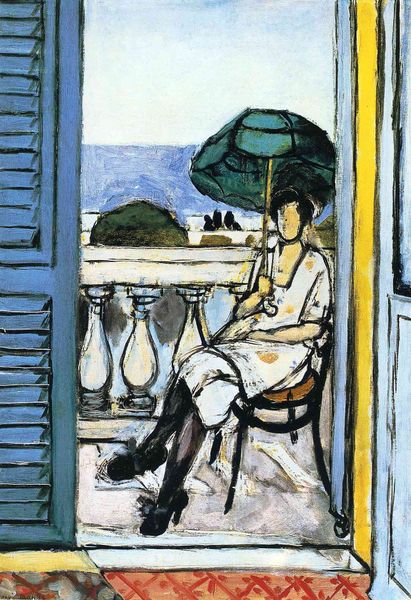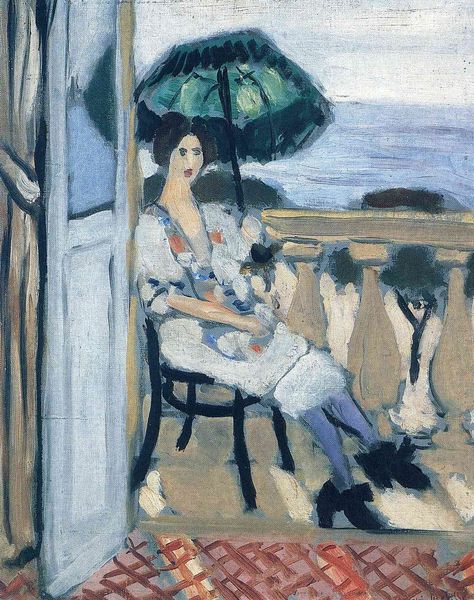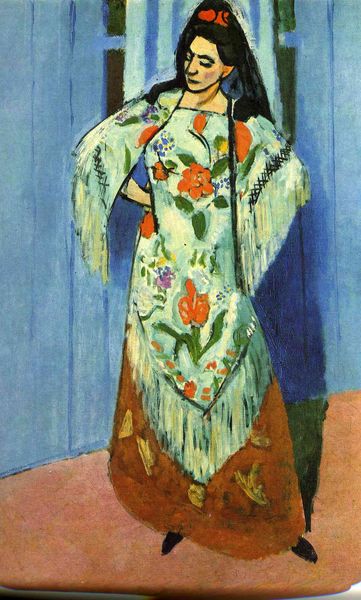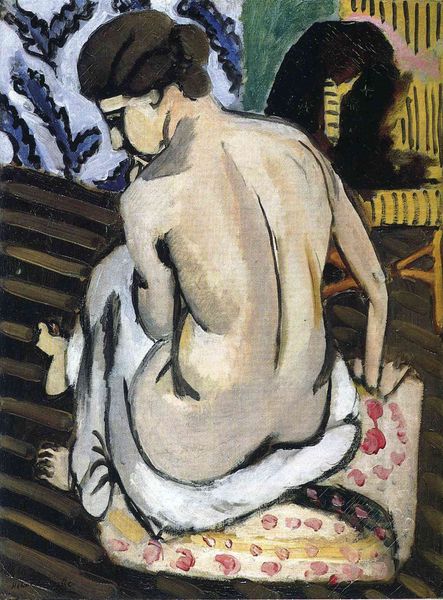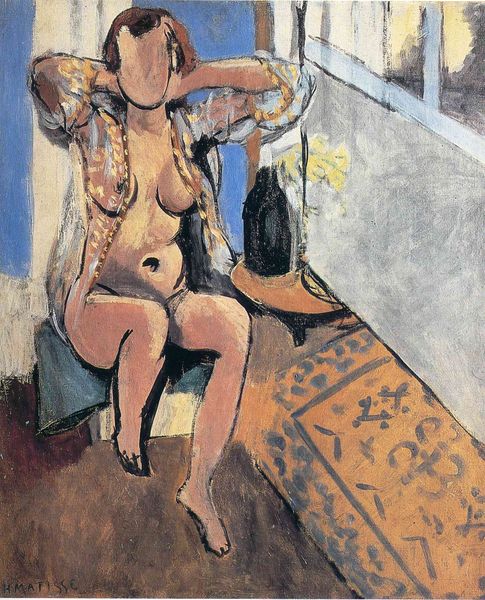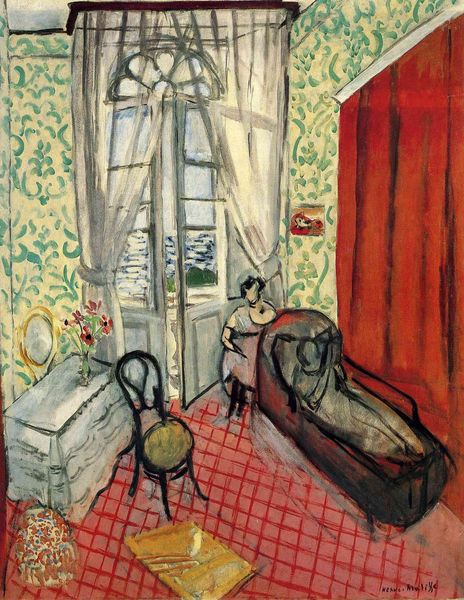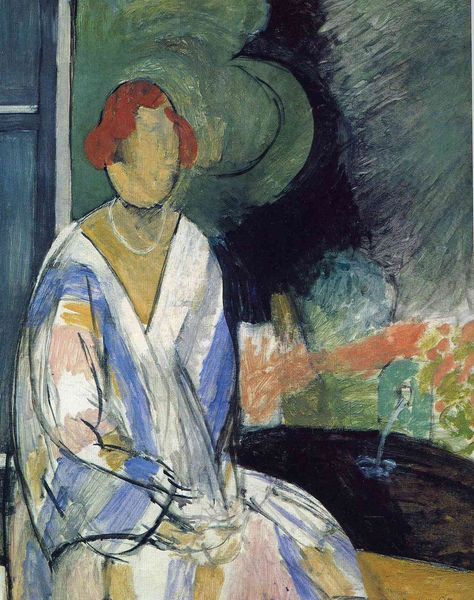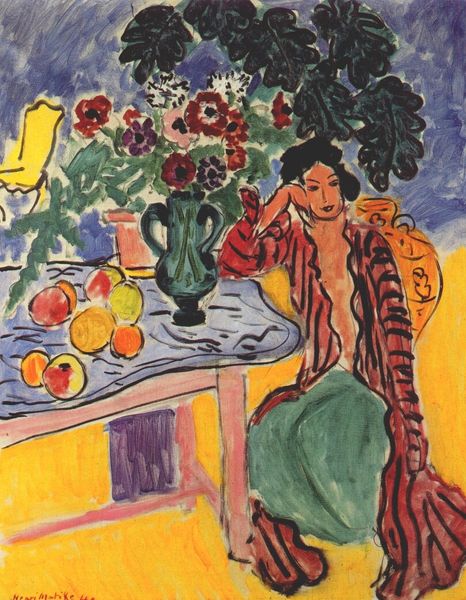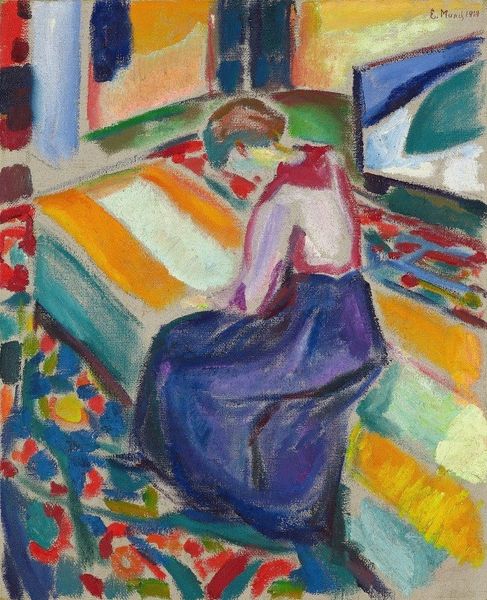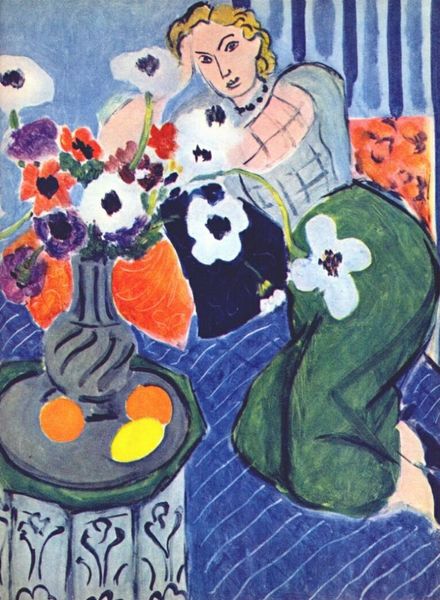
Copyright: Public domain US
Curator: Henri Matisse created "Woman holding umbrella" in 1919 using oil paint. Editor: It's serene. I'm immediately struck by the casual intimacy—she's almost caught off guard in a moment of reverie. The texture of the paint feels soft, lending the entire piece a contemplative atmosphere. Curator: Consider the composition's architecture, though. The sharp blues of the shutters offer a dynamic contrast to the figure, almost framing her. Matisse carefully juxtaposes interior and exterior, domesticity and the distant vista. Semiotic codes of colour, form, and subject are strategically positioned, aren’t they? Editor: True, but think about where he was in 1919 – the war was just over. I imagine getting oil paints must have been much easier then, than during it! Plus, the floral dress! Textiles were heavily impacted. It speaks to material availability, post-war, no? Even her pose. She is still! Who isn't exhausted? Curator: An intriguing theory; however, let's address the materiality of paint itself. Observe how the oil enables light. The translucence in the application renders a shimmer across her dress. This effect achieves a sense of the ethereal. That is no small feat, even if paint was becoming readily available! Editor: I concede that, but to create that light takes hours! Do we even think about the time spent creating art in the studio, a space, by the way, accessible to few?! Time becomes a vital ingredient here, a key material element itself. Curator: It does invite further thought regarding process and availability, especially given that Matisse worked on this after a period of illness, according to historical evidence. A fascinating dance between subject, process, and societal context indeed. Editor: Absolutely. Considering material availability in the historical context along with the composition creates new dialogues.
Comments
No comments
Be the first to comment and join the conversation on the ultimate creative platform.
